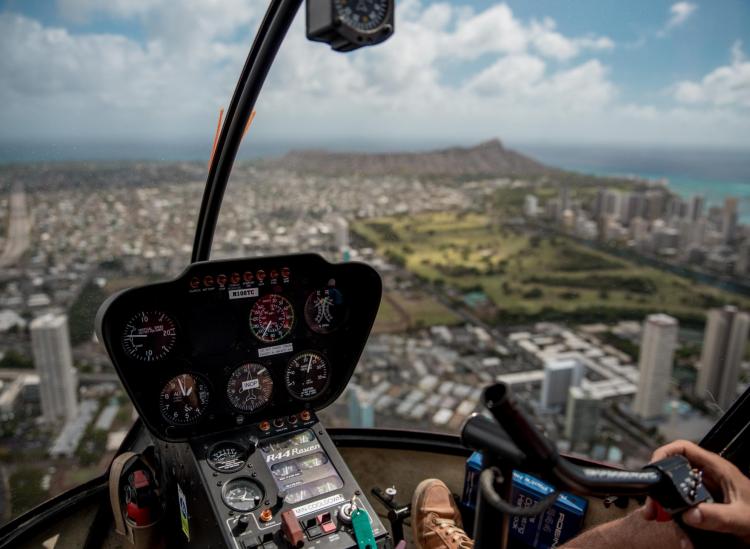Here’s What You Need To Know Before Flying Off On A Helicopter Tour

Unsplash
Helicopter tours are a popular and exciting bucket list item for many travelers who want to see the sights from above. But the headlines are as scary as the flights are thrilling. Recently, a New York City helicopter tour crashed into the East River, and five people died. In February, a flight over the Grand Canyon crashed, also killing five people.
Here’s the reality: In the United States, there were 106 helicopter accidents in 2016. Seventeen people died. That’s an average of slightly more than three accidents for every 100,000 hours of helicopter flying time.
Statistically, your odds of getting hurt on a helicopter have been decreasing for the past three years. But just like any adrenaline-inducing activity, there are safety matters to consider before taking flight. No one wants to think about the possibility of a crash, but it’s better to know what to do in the case of an emergency than to be unprepared. Here’s what to think about before choosing a helicopter ride.
1. Regulation
If you’re looking for certifications, helicopter tours in the U.S. are under the purview of the Federal Aviation Administration (FAA). That means pilots taking customers out have to register with the administration in order to be allowed to fly.
But there’s a lot of variation in what kind of certifications are out there. Helicopters aren’t like commercial airlines with strict guidelines on pilots, routes and flight times. Helicopter pilots that are navigating trips specifically for photography purposes don’t legally need to have the same training as commercial pilots. Traditionally, these flights were for single photographers or geographic surveys. But in the social media age, everyone is a photographer. See the loophole?
The objectively safest helicopter tours are designated as passenger aircrafts. They require more training for pilots and have stricter policies about flight hours, and the helicopters have equipment approved by the FAA. Technical speaking, you’re looking for a helicopter with an FAA Part 135 Air Carrier license. That’s the passenger kind. (A Part 91 license is the aerial photography license.)
2. Seat Belts And Harnesses
Obviously, you’re going to wear a seat belt while in a helicopter. But there are different types of seat belts for different types of flights.
A traditional helicopter ride uses a regular seat belt, similar to the kind you see in airplanes. But there are also open-door helicopter tours, like the one that crashed in New York, that use harnesses. These harnesses keep passengers fastened inside of the helicopter — sometimes even allowing their feet to dangle outside — but that also means it’s more complicated to remove in the case of an emergency.
Think of it like this: A seat belt is designed to keep you safe inside of a vehicle and allow for easy entrance and exit from that vehicle. A harness is designed to hold you inside a vehicle. Because open-door regulations were designed for the rare professional photographer or surveyor, companies never really had to evaluate how to train average tourists to escape an intense harness during a horrifying emergency situation.
Since the crash in the East River, the FAA banned open-door helicopter rides. However, there are still open-door flights in other parts of the world. If you choose to go on one, don’t hesitate to ask questions about safety. Aviation safety experts say you want to fly in helicopters with quick-release harnesses, and you should be comfortable and familiar with how they work before going up in the air.
3. Emergency Preparation
Sometimes we zone out during the airplane safety spiel — we’ll admit it. No matter how flashy they make the little pre-flight video, everyone is on their phones or already napping. But when you’re getting on a helicopter, you need to pay attention. Smaller vehicles mean less streamlined emergency situations. If something goes wrong, there aren’t 10 flight attendants ready to assist passengers. You need to know the drill.
The FAA mandates that every tour taking to the skies gives passengers an emergency explainer. Bottom line: If a helicopter tour doesn’t walk you through what to do during an emergency situation, don’t get in the vehicle.
If you check the registration, wear your seat belt and pay attention to safety instructions, you can totally take a helicopter tour. Yes, like every activity that gets you flying high above the ground, there are risks. You want to be an informed participant. But it’s called thrill-seeking for a reason! There’s always a risk. It just depends how much you want to fly.











